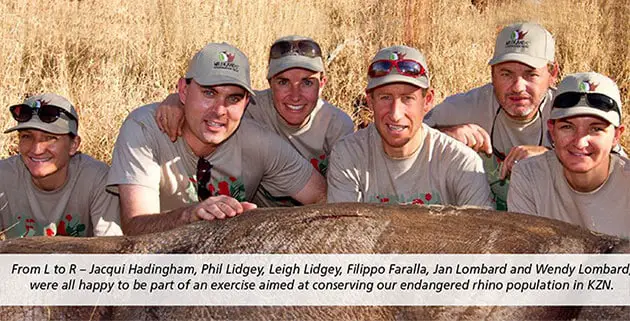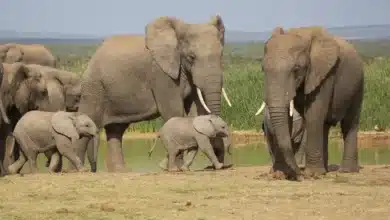Exploring Game Capacity at Big Five Reserves
Ever wondered why some game reserves have more Big Five sightings than others? This article provides the answers.
By Des Langkilde.
According to Vernon Wait, owner of South African based tour operator Pembury Tours, who specialise in safaris to some of southern Africa’s premium Big Five game reserves: “The three main aspects of any African safari are the game-viewing, the accommodation and the food, but the main reason why tourists go on safari is to view game and, as an inbound industry, we should try to remember this as there is sometimes a risk that we allow other, less significant, factors to determine where we send our clients for their safari experience.”
This statement published in the August edition of Tourism Tattler piqued my curiosity (read the article here). Do some game reserves provide more Big Five sighting opportunities than others? And if so, why?
Cramming a lot of game into a confined area would ensure frequent sightings of different game species, but tourists don’t travel to Africa to visit a zoo and, also, tourists want to know that they are on safari where the game viewing is sustainable. They come to experience Africa’s wildlife roaming free in their natural habitat – specifically the Big Five (Cape buffalo, elephant, leopard, and rhinoceros).
But wildlife husbandry and conservation is not that simple, specifically when predators, plains game and large herbivores are confined by fences and endemic flora biodiversity. Issues such as the game carrying capacity and grazing suitability of the land, the migratory instincts of certain species, the potential spread of diseases, and the fundamental role that grazing animals have in the dispersion of plant seeds are just a few of the considerations that wildlife conservation managers are faced with.
For answers to these issues, I turned to Rob Gradwell, Managing Director of Lalibela Private Game Reserve in South Africa’s malaria-free Eastern Cape province.
“The fact that Lalibela has the densest population of free-roaming predators in the Eastern Cape, is directly attributable to the substantial areas of savannah grassland – the vegetation type with the highest carrying capacity for herbivore grazing – that we are fortunate to have on Lalibela.
“This is a very significant asset because it means that Lalibela is able to sustain vast herds of plains game, which in turn determines the number of predators that we can sustain on the reserve.
“To put it to you another way, if every hectare of the valley bushveld biome can sustain X number of grazers like impala, and every hectare of savannah grassland can sustain 10 times X, then two facts become clear: On a sustainable basis, significantly more predators can exist on properties that have large areas of savannah grassland than on properties that do not have much savannah grassland, and; Since predators have significantly more game to prey on over savannah grassland than other biomes, there are far better opportunities for guests to see both predators and prey.
“Regarding the game carrying capacity and grazing suitability of the land, we commissioned a team of game management experts whose analysis determined the ideal numbers of various species of game that the reserve can sustain, which is based on the five flora biomes found here.
“In addition, the new owners of Lalibela acquired more land in late July 2016 to expand the boundaries of the reserve, which now stretches over 10,255 hectares (over 25,000 acres). So based on the game carrying capacity analysis, we embarked on a game repopulation programme (read more on this aspect here), with significant purchases of Cape buffalo, black wildebeest, zebra, kudu, giraffe, impala, and blesbok, which have been introduced to both the ‘Big-5 area’ as well as in the new breeding area. The existing herds of elephant and hippo are breeding well and their numbers are still within the sustainable carrying capacity of the reserve.
“Our long term project aimed at eradicating alien invasive plant species and to re-establish the endemic flora within the reserve is still ongoing (read more about this project here), and will ultimately create still more grassland savannah to sustain the plains game and hence the predator species such as lion, cheetah, leopard, and the smaller cats like serval, caracal, and black footed cats. Then there’s the scavenger species who clean up after them such as hyena, aardwolf, foxes and jackal, which are also breeding in sustainable numbers,” says Gradwell.
According to research* undertaken by the Department of Animal, Wildlife and Grassland Sciences, University of the Free State, the basic requirement of management systems for sustainable game production from temperate savannah or veld is to balance the stocking rate of the various game species with the grazing and browsing capacity of the savannah biome.
The study cites a rather complicated formula for determining the carrying capacity of African savannah for large ungulates (over 100 kg in mass), which takes into account the type of grass (sweetveld or sourveld), the chemical defences of woody plants (nutritional characteristics of leaves in different phenological stages), and the effects of soil type, and frequency of precipitation and fire. To complicate matters further, the agricultural method for measuring the metabolic mass of animals such as cows and sheep in terms of Animal Units (AU) and Large Stock Units (LSU) had to be adjusted to account for the ecological separation of herbivore game species.
Using the above table, the author then delves into two calculation formulae for determining the grazing capacity per hectare versus the browsing capacity, and then advises an even more sophisticated calculation approach to adjust the browse capacity at peak biomass for a reduction in browse availability during each month of the year according to specific values. This is a complicated science but it does give some insight to the reader as to why the game viewing experience can differ so drastically from one property to the next.
*Calculation of grazing capacity and browse capacity for game species by G.N. Smit.












